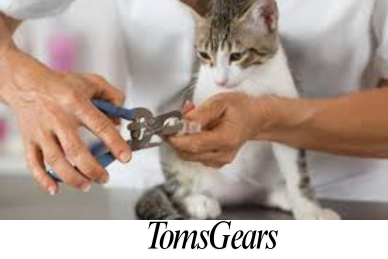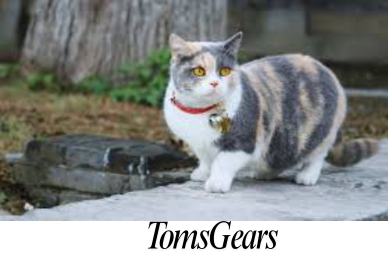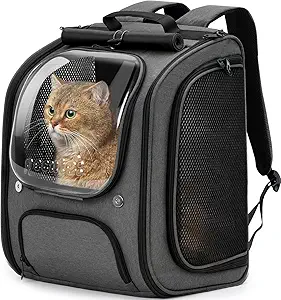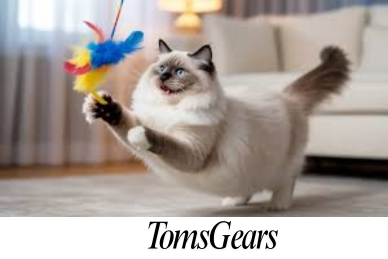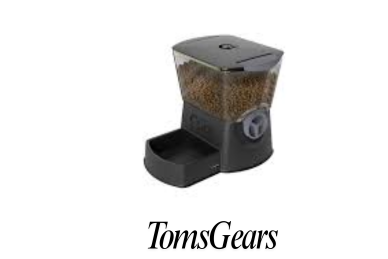Are Automatic Cat Feeders Worth It?
An automatic cat feeder is a device designed to dispense pre-measured portions of dry or semi-moist cat food at scheduled times. These feeders come in various shapes, sizes, and technologies, ranging from simple gravity-fed systems to high-tech, Wi-Fi-enabled models with advanced features.
However, you should be aware that even with an automatic cat feeder, you are not supposed to leave your cat for a prolonged period of days, as it will introduce other critical issues. With that being said, let’s now look at the benefits and drawbacks of using one, so that you can find out if you should get one.
Benefits of Automatic Cat Feeders
Convenience
One of the primary advantages of automatic cat feeders is the convenience they offer. With busy work schedules, errands, and social commitments, it’s easy to forget to refill your cat’s food bowl on time. An automatic feeder ensures your feline friend receives their meals at the scheduled times, even when you’re not home.
Portion Control
Many automatic feeders allow you to program precise portion sizes for each meal. This feature can be invaluable for cats prone to overeating or those on a weight management plan. By controlling the amount of food dispensed, you can help maintain your cat’s healthy weight and prevent obesity-related health issues.
Freshness
Some automatic feeders are designed to keep the food sealed and protected from moisture, air, and pests. This feature can help preserve the freshness of the food, reducing the risk of spoilage and contamination.
Routine and Consistency
Cats are creatures of habit and thrive on routine. An automatic feeder can help maintain a consistent feeding schedule, even when your daily routine is disrupted. This consistency can reduce stress and anxiety for your feline friend, promoting overall well-being.
Additional Features
Depending on the model and price range, some automatic cat feeders offer additional features that can enhance the feeding experience. These may include voice recordings for mealtime calls, cameras for remote monitoring, and integration with smart home systems for added convenience.
Drawbacks and Limitations of Automatic Cat Feeders
While automatic cat feeders offer several benefits, it’s essential to consider their potential drawbacks and limitations before making a purchase.
Malfunctions
Like any electronic device, automatic feeders can malfunction due to power outages, mechanical issues, or other technical problems. If the feeder fails to dispense food, your cat may go hungry until the issue is resolved. It’s crucial to monitor the feeder regularly and have a backup plan in case of emergencies.
Not Suitable for All Cats
Some cats may be skittish or hesitant around the dispensing mechanism of automatic feeders, especially if they’re not introduced to it gradually. Additionally, most automatic feeders are designed for dry or semi-moist food, making them less suitable for cats requiring a wet food diet.
Over-reliance
While automatic feeders can be a convenient solution, they should not replace human interaction and playtime entirely. Cats are social creatures and still benefit from regular social interactions with their owners during mealtimes.
Not a Substitute for Pet Sitting
Automatic feeders are not a replacement for pet sitters when you’re away for extended periods. Someone should still check on your cat regularly to ensure their overall well-being, clean the litter box, and provide fresh water.
Other Considerations
- Large cats or those who eat more than a cup of food per serving may not be well-served by some automatic feeders with limited capacity.
- Some feeders can jam easily, leading to potential food waste and frustration.
- Many automatic feeders require pre-portioning meals, which can be time-consuming.
- There is a risk of overfeeding pets if the feeder is not programmed correctly or if the cat learns to manipulate the dispensing mechanism.
- Automatic feeders may not be ideal for households with multiple pets, as they typically cater to one cat at a time.
Making the Decision: Is an Automatic Feeder Right for You?
Determining whether an automatic cat feeder is right for you and your feline friend involves considering your lifestyle, your cat’s needs, and the potential benefits and drawbacks.
An automatic feeder can be a helpful investment if:
- You have a busy schedule that makes it challenging to maintain a consistent feeding routine.
- Your cat is prone to overeating or requires portion control for weight management.
- Your cat thrives on routine and predictability during mealtimes.
However, if you’re frequently away for extended periods, a pet sitter may be a more suitable option to ensure your cat’s overall well-being is attended to.
When evaluating automatic feeders, consider factors such as your budget, your cat’s personality and feeding habits, and the specific features you require. Some cats may adapt better to certain types of feeders than others, so it’s essential to choose a model that aligns with your cat’s preferences and needs.
Alternatives to Automatic Feeders
If an automatic feeder doesn’t seem like the right fit for your situation, there are alternative options to consider:
Timed Feeders: These feeders dispense pre-filled trays of food at set times, offering a more basic solution for maintaining a consistent feeding schedule.
Gravity Feeders: These feeders continuously dispense food as the bowl empties, allowing your cat to eat freely. However, they offer limited portion control.
Enrichment Feeders: These interactive feeders challenge your cat to work for their food, slowing down their eating and providing mental stimulation.
Asking a Trusted Friend, Neighbor, or Pet Sitter: If you’re away from home for extended periods, enlisting the help of a trusted individual to visit your home and feed your cat can be a reliable solution.
Choosing the Right Automatic Feeder
If you decide an automatic feeder is the best option for your cat, it’s essential to choose the right model to meet your needs. Here are some key factors to consider:
- Adjustable portion sizes to accommodate your cat’s dietary needs.
- The ability to program multiple feeding times throughout the day.
- Some feeders allow you to record mealtime calls to alert your cat.
- Some high-end models include a camera for remote monitoring of your pet.
- Compatibility with smart home systems for added convenience.
Conclusion
Automatic cat feeders can be a convenient and practical solution for busy pet owners or those seeking to maintain a consistent feeding routine for their feline friends. However, it’s essential to weigh the potential benefits against the drawbacks and limitations to determine if an automatic feeder is the right choice for your individual circumstances.
Consider factors such as your lifestyle, your cat’s personality and dietary needs, and the specific features and capabilities of various automatic feeder models. While automatic feeders can offer convenience and portion control, they should not replace the human interaction, playtime, and overall care that cats require.
FAQs
Can automatic feeders dispense wet food?
Most automatic feeders are designed to work with dry or semi-moist kibble. However, there are some models specifically made for wet food, but they tend to be more expensive and require more maintenance to prevent bacterial growth and odors.
How long can I leave an automatic feeder unattended?
The duration you can leave an automatic feeder unattended depends on its food capacity and the portion sizes programmed. Generally, it’s recommended not to leave an automatic feeder unattended for more than a few days to a week at most. Someone should still check on your cat regularly for litter box cleaning and overall well-being.
Can multiple cats use the same automatic feeder?
While some automatic feeders claim to be suitable for multi-cat households, it’s generally not recommended. Each cat has different dietary needs and feeding habits, and an automatic feeder may not be able to cater to those individual requirements accurately. It’s best to have separate feeders for each cat.
How do I introduce an automatic feeder to my cat?
It’s important to introduce an automatic feeder gradually to your cat. Start by placing the feeder in their regular feeding area and letting them get used to its presence. Then, dispense a small amount of food manually while the feeder is on to associate the sound with mealtime. Slowly increase the portions over time until your cat is comfortable eating from the feeder.
How do I prevent my cat from overeating or tampering with the feeder?
Some automatic feeders have tamper-proof designs or lockable lids to prevent cats from accessing the food reservoir. You can also try placing the feeder in a location where your cat can’t jump or climb onto it. Additionally, proper portion control and sticking to scheduled feeding times can help prevent overeating.

